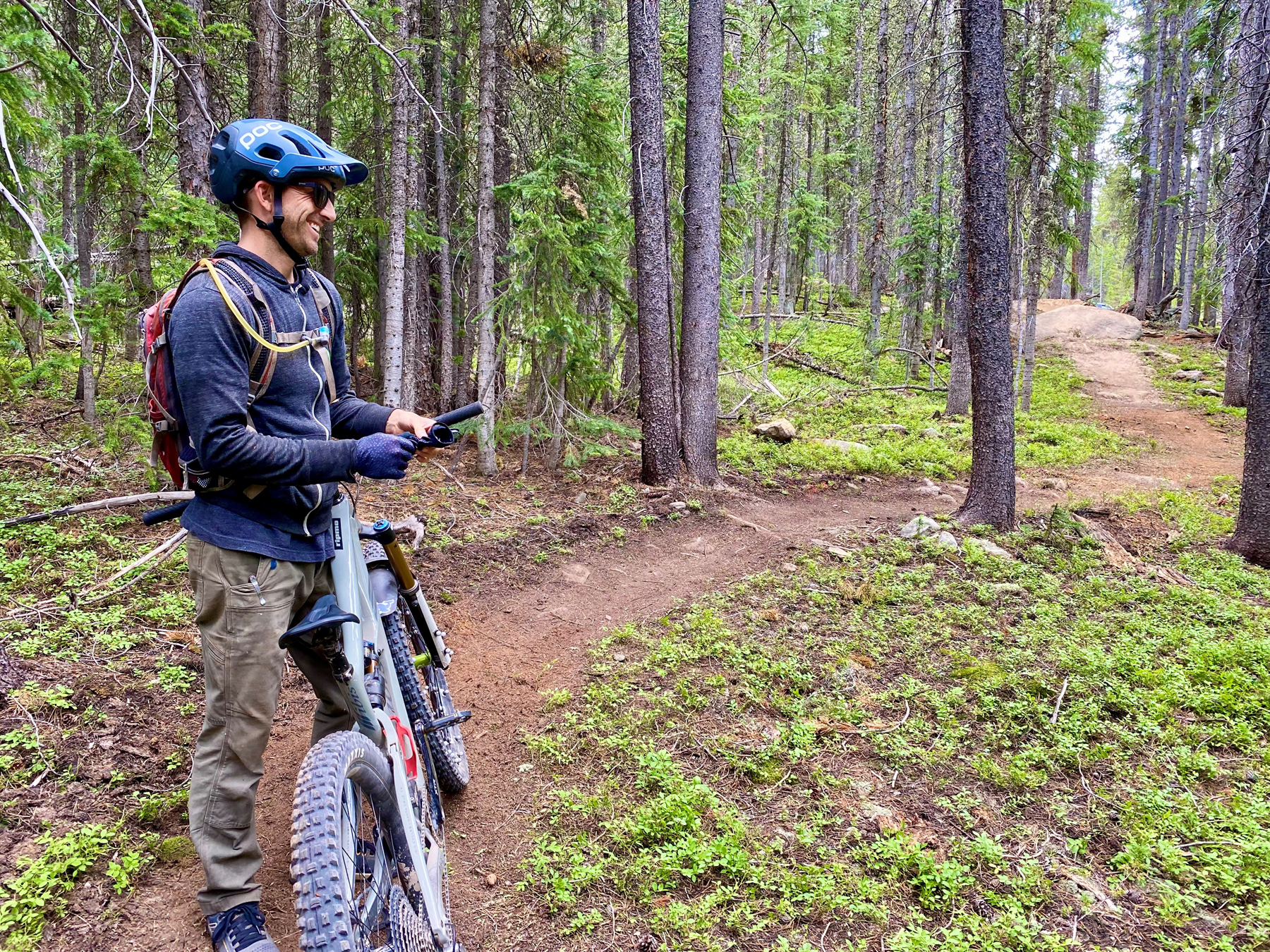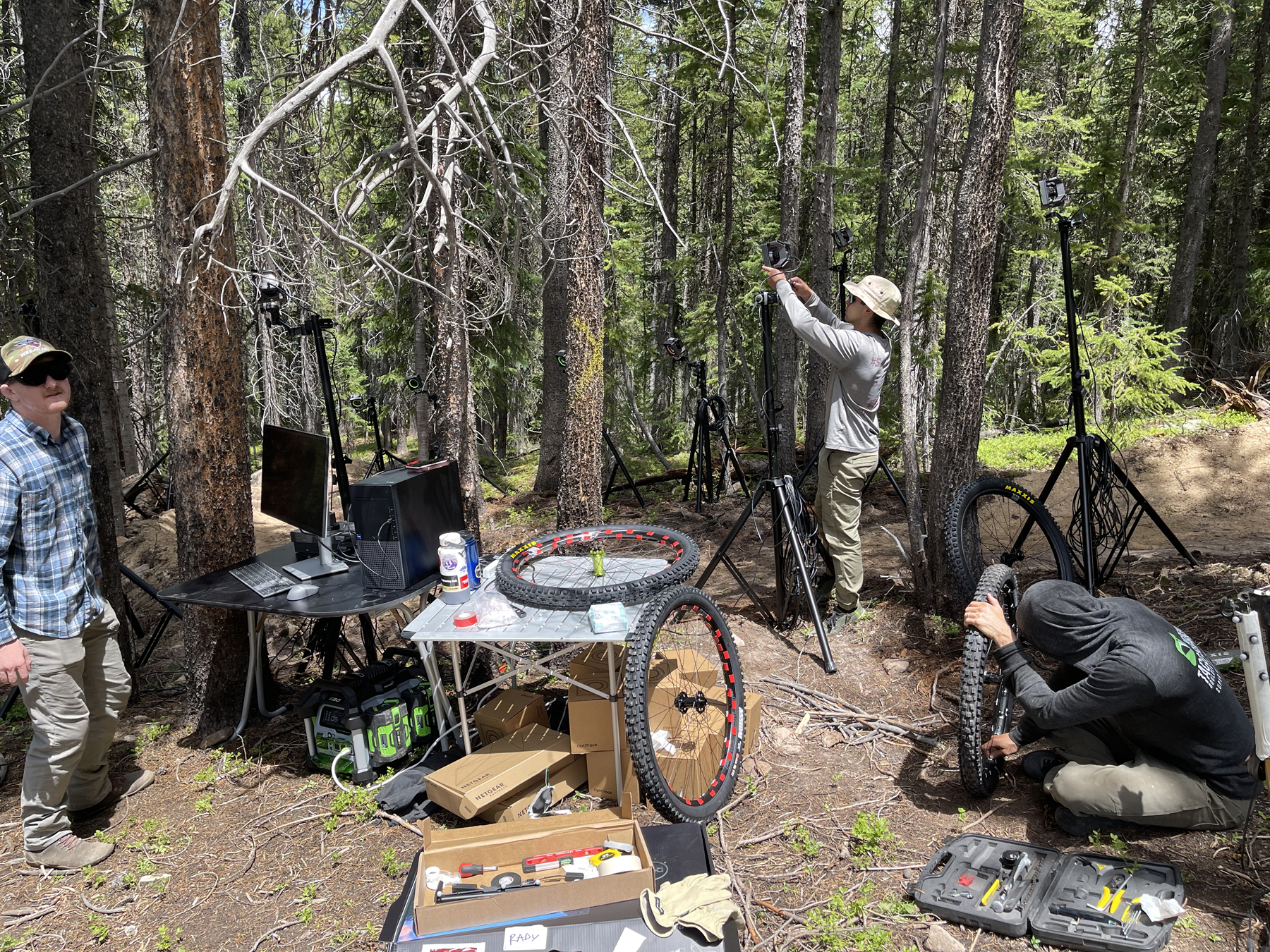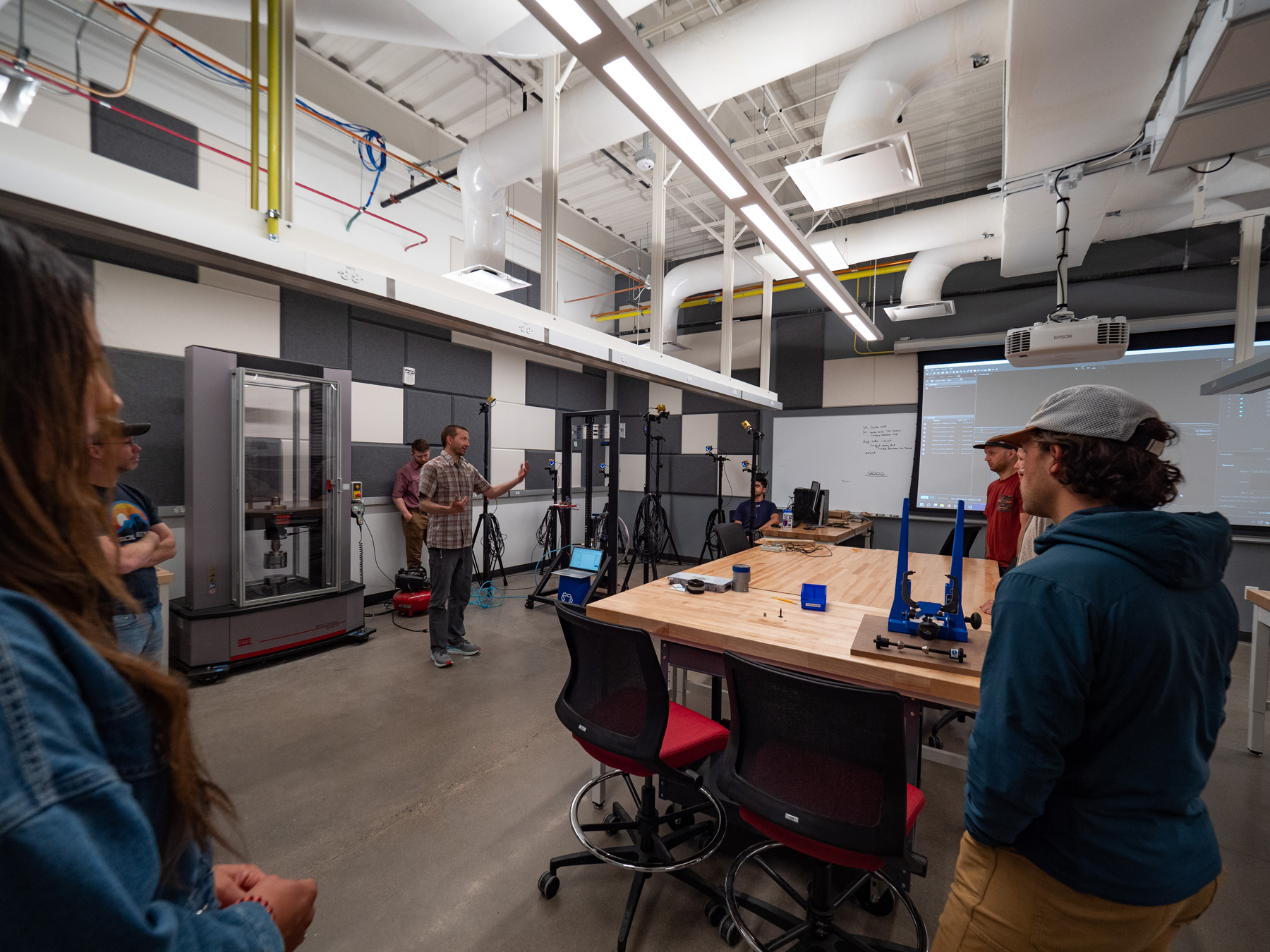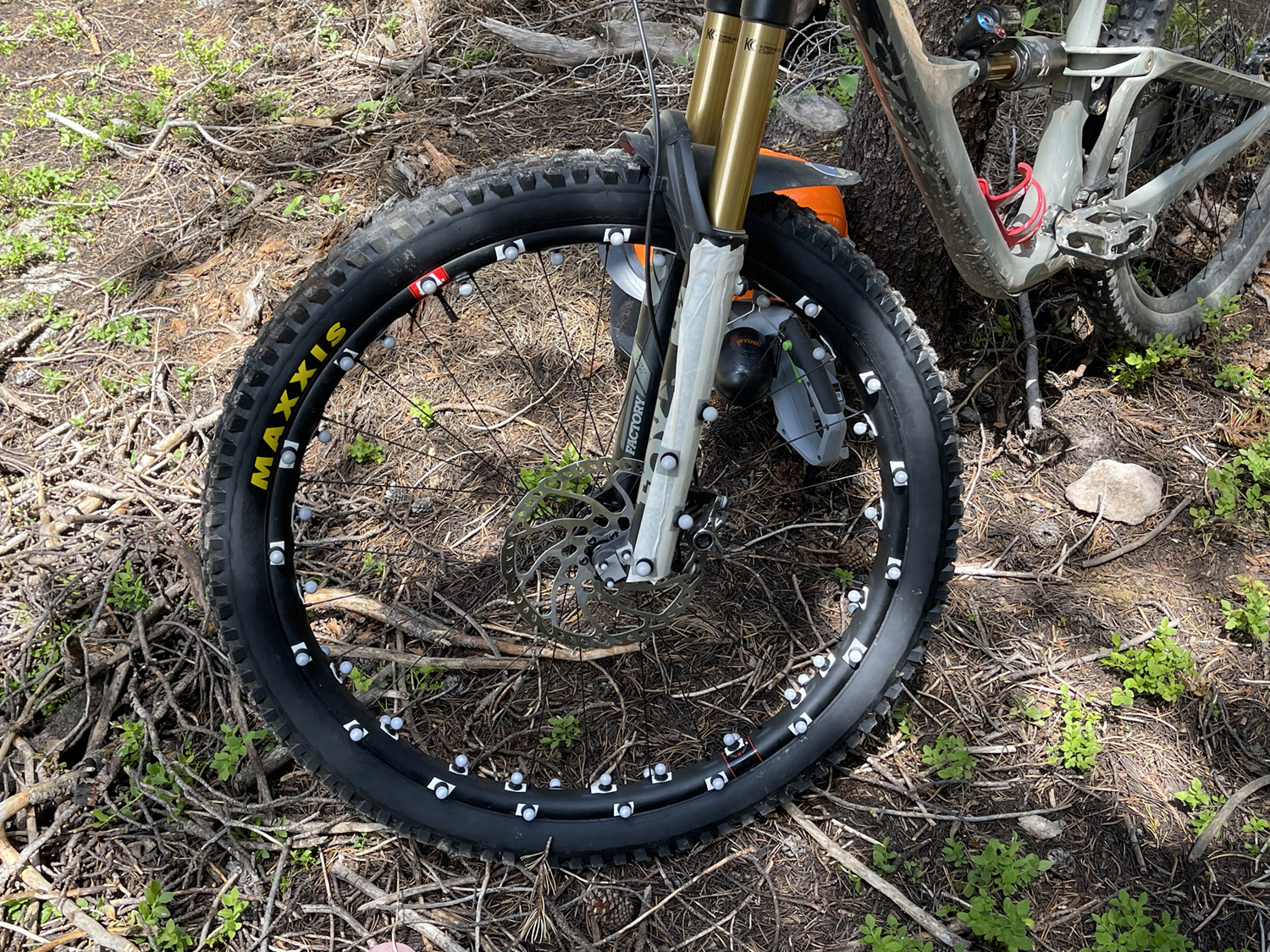
Mountain bike wheels matter, a lot. They can be quite expensive (particularly at the high end), they take an enormous amount of abuse, and a broken one can put an end to your ride — or worse.
Wheels also play a huge role in the ride feel and performance of a bike. But it can be hard to understand what the actual tradeoffs are between different models, beyond basic metrics like weight, width, and so on.
So while choosing the right wheels is hugely important, there’s been a shortage of clear, objective, real-world data out there to compare wheels head-to-head.
Until now.

Blister Labs is poised to become an unprecedented resource for riders looking to understand the performance and tradeoffs of a variety of mountain bike wheels, both aluminum and carbon, across a wide range of price points.
Our Blister Labs team, in partnership with Western Colorado University and CU Boulder’s engineering program, has made a huge amount of progress on our mountain bike wheel testing.
We’ve spoken about this project on episode #180 and episode #204 of our GEAR:30 podcast, but we wanted to provide a bit more information on what we’re doing and why.
Even for well-informed consumers that have checked out our in-depth wheel reviews, it can be more than difficult to understand how the many available options differ. Or, to identify what they truly value in terms of performance characteristics, and what features and attributes may or may not be worth paying more for.

Aluminum and carbon wheelset options abound, with various manufacturers touting the benefits of often-conflicting attributes, such as stiffness, compliance, damping, liveliness, and more, and prices for some high-end options reach well over $2,000. That’s a major investment for most people, which is precisely why we feel that it’s so important to provide the most comprehensive and comprehensible information on what (and whether) you should spend your hard-earned money on.
And to that end, we’ve identified four key goals for our wheelset testing.

Our Wheelset Testing Goals
(1) Develop tests that are accurate, repeatable, and representative of real-world riding conditions.
(2) Use those tests to evaluate a range of wheelsets across a range of price points, materials, and design attributes, both in the lab and with quantitative real-world riding data, and correlate those different data sets to each other to validate the test protocols.
(3) Present the results in such a way that they are easily understood and directly applicable to actual performance (i.e., not just emphasizing a single attribute or metric, but painting a complete picture of the tradeoffs inherent to the various options, weight ranges, materials, and more), and in language that will be clear and understandable to everyone.
(4) Correlate those quantitative results to the qualitative ones that our reviewers have identified on trail (e.g., not assuming that a stiffer wheelset is inherently better, but instead furthering our understanding of how measured stiffness feels in different circumstances, and clearly presenting that information to riders who may not have tried a dozen different wheelsets themselves).
Because the truth of the matter is that there is no objective “best” wheelset (or pair of skis, or running shoes, or anything else); there are products that do certain things better than others and have tradeoffs in other areas, and the goal of Blister Labs is to provide our readers with the best information available in order to choose the right wheelset for you.

Our Test Methodology
Measurements for the wheelset testing are being collected using techniques developed in Professor Humbert’s robotics lab at CU to aid in real-time feedback control of autonomous flight and navigation. These measurements can be taken up to 1,000 times per second with 0.1-millimeter accuracy (~0.004 of an inch, equivalent to the thickness of a piece of paper). Markers around the perimeter of the wheel are tracked and mapped in 3D space, and information on the applied forces is calculated to correlate in-field data with lab tests.
With that understanding, we can perform dynamic modeling to extrapolate in-field performance results from further lab testing. The software used in the data processing and analysis is highly sophisticated (and processes over five million lines of data), and the resulting analysis will go far beyond simple metrics of stiffness and strength. We will be able to characterize the performance of different wheels in far greater detail than anything that’s been available to consumers before now, and we’re just getting started.
We have collected an immense amount of data already. And what we’re seeing is very promising, and vastly exceeds the capabilities of consumer-facing testing available anywhere else.
We’re excited to start sharing results soon. Stay tuned….

Stoked someone is doing this research! There’s so much to learn in this space and potential performance gains to be made. Looking forward to seeing the results.
The Blister Labs + Western University Rady School of Engineering + CU Boulder partnership is a homerun. This team is developing highly precise and quantifiable metrics to complement Blister’s excellent qualitative gear reviews. The results will be the most comprehensive and thorough gear reviews in the world. This is extremely exciting.
The world class research and teaching that is going on at Western University Rady School of Engineering is going to reshape the outdoor industry. Can’t wait to follow the terrific progress.
Something else that would be great for you guys to test, related to wheels, are Berd spokes!
Thank you all for doing this. This could be a real game changer!
That’s an awesome project and can’t wait to read more on this!
The one thing that kinda bothers me, though, is that there still is no long-term blister review of the Ibis Ripmo v2, which seems to be your wheel texting workhorse! Would love to see that bike in your comparisons!!
So stoked for this info! Thanks, Blister team!
More than stiffness or compliance I have found acceleration to be most noticeable.